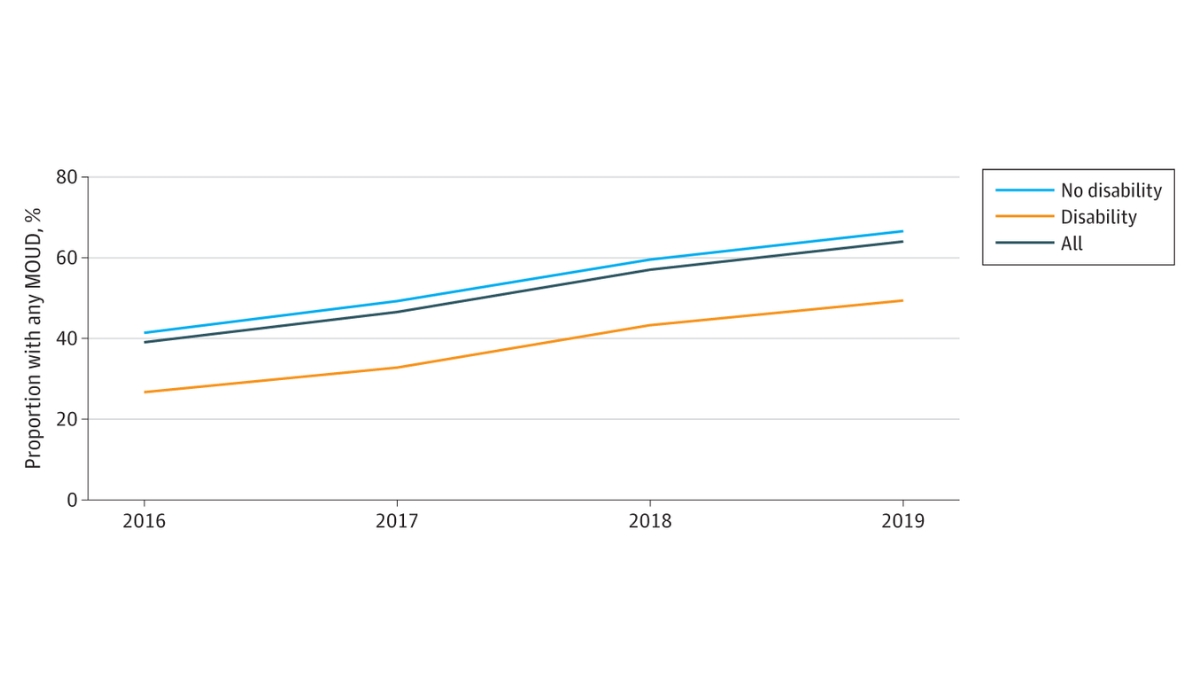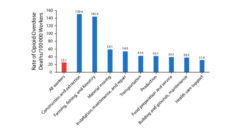The U.S. opioid crisis stems from increased opioid prescriptions in the 1990s, in particular OxyContin. The painkiller was falsely advertised as having low addiction potential and marketed as a treatment for non-cancer-related chronic pain.
The effects of over-prescription are still visible today. A report on the 2021 National Survey on Drug Use and Health found that than 5 million Americans were addicted to opioids.
People with disabilities—those receiving disability benefits or reporting hearing, vision, cognitive, mobility, or other complex activity limitations—are particularly vulnerable to addiction risks, and have higher rates of opioid use, poisoning, and overdose deaths.
Disabilities are associated with risk factors that contribute to self-medicating, such as social isolation and poor health outcomes. However, pain management plays a significant role: people with disabilities often use and misuse prescription opioids for pain relief, rather than for getting high or relieving stress.
Effective medications for opioid use disorder (MOUD: buprenorphine, methadone, and extended release naltrexone) do exist. To understand practitioners’ prescribing behavior for opioid use disorder populations, Cindy Parks Thomas and colleagues examined substance use treatment in people with disabilities.
The authors examined Medicaid claims from 2016-2019 to identify persons aged 16-64 with an opioid use disorder diagnosis who completed continuous treatment for six months. They classified people with disabilities as adults who received a diagnosis for physical, sensory, developmental, or cognitive disabilities.
The graph above tracks MOUD treatment increasing over time for those with and without disabilities, but consistent treatment over a 6-month period was lower for people with disabilities.
Access to treatment can be difficult for people with disabilities, but the authors speculate that bias worsens this barrier. Physicians without knowledge and awareness of disability-related challenges may struggle to engage and properly treat the population.
Lastly, the use of MOUD remains relatively low across the United States. Despite recent increases in opioid overdose, these medications may not be covered by insurance or provided in treatment facilities. Unfortunately, this leaves the most effective substance use treatment out of reach for many.
Databyte via Cindy Parks Thomas, Maureen T. Stewart, Emily Ledingham, et al. Quality of Opioid Use Disorder Treatment for Persons With and Without Disabling Conditions. JAMA Network Open, 2023.














